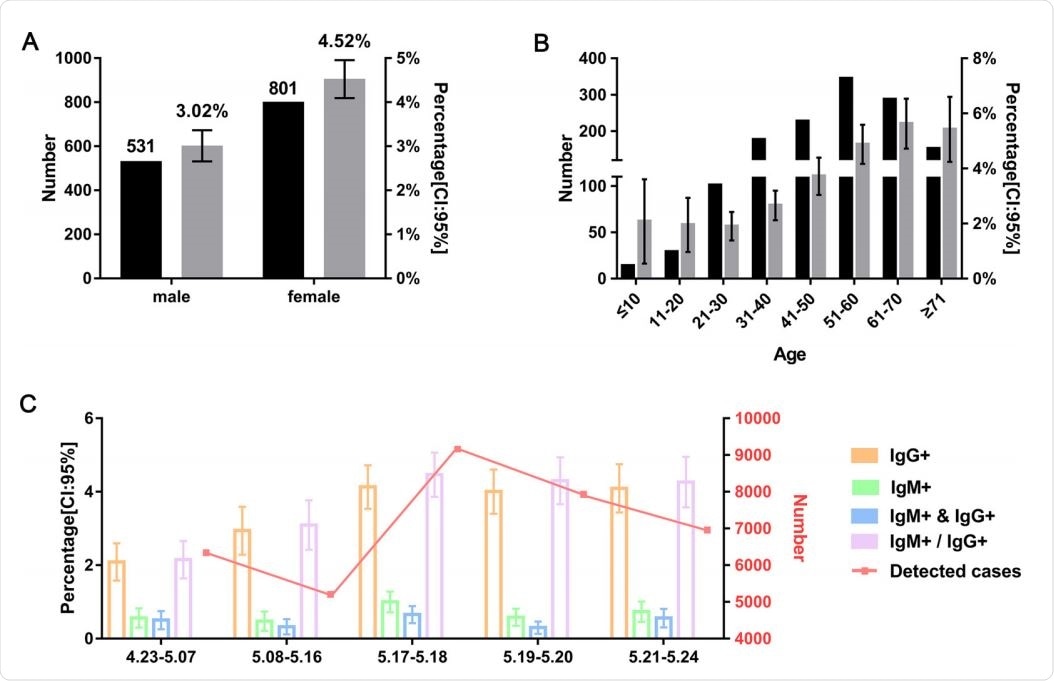Since the emergence in December 2019 in Wuhan, China, severe acute respiratory syndrome coronavirus 2 (SARS-CoV-2) has spread worldwide via transmission among close human contacts. Early on, several public health interventions were implemented in Wuhan city and Hubei Province, including lockdowns, social distancing, traffic restrictions, stay-at-home policies, face mask requirements, building temporary hospitals, and centralized quarantine. There were 50,355 confirmed cases of SARS-CoV-2 infection in Wuhan as of 28 January 2021.
According to a modeling study, the travel restrictions in Wuhan delayed the progression of the epidemic by 3 to 5 days in mainland China. They decreased international importations of SARS-CoV-2 by 80% through mid-February. The multifaceted public health interventions were associated with increased control of the COVID-19 outbreak in Wuhan city.
The study also showed that measures such as social distancing reduced transmission of severe acute respiratory syndrome coronavirus 2 (SARS-CoV-2) and mitigated COVID-19 burden in Singapore and China. However, the study determined COVID-19 cases based on the detection of SARS-CoV-2 RNA in symptomatic patients and ignored large numbers of recovered symptomatic patients who did not get tested and asymptomatic patients.
Determining the cumulative incidence of SARS-CoV-2 infection in Wuhan using serologic tests
Researchers from China recently conducted serologic tests on 35,326 individuals to assess the cumulative incidence of SARS-CoV-2 infection in Wuhan city. The individuals in the study belonged to 4 different communities. The study is published in mSphere, an open-access journal published by the American Society for Microbiology.
The study results showed that 1,332 individuals (3.77%) tested positive for COVID-19 antibody – either Immunoglobulin M (IgM) or Immunoglobulin G (IgG). Males were found to have a lower positivity rate compared to females (3.02% vs. 4.52%). There was a clear increasing trend in antibody positivity rates based on patients’ ages and positivity varied across different communities. The findings indicate that public health measures may play a significant role in controlling SARS-CoV-2 transmission.
“Of note, the overall positive rate in Wuhan is lower than what was reported in other regions, like Spain (3.77% versus 5.0% to ∼6.2%) and Geneva, Switzerland (3.77% versus 10.8%).”
Study shows asymptomatic patients can have a greater risk of virus transmission than symptomatic patients
This study revealed that there is a higher prevalence rate of SARS-CoV-2 antibodies in the elderly population. Older adults are more likely to have comorbid conditions that may increase the severity of COVID-19 disease. Since asymptomatic patients do not have clinical symptoms, diagnosis and treatment can be delayed, and they may have a greater risk of virus transmission compared to symptomatic patients. This poses a massive challenge to infection control.

Reported cases in Wuhan were lesser than the actual infections due to asymptomatic COVID-19 infections
The findings of this study offer important data for the assessment of the status of the COVID-19 epidemic in the initial epicenter of Wuhan, China. About 3.77% of Wuhan’s population had detectable antibodies against the SARS-CoV-2 virus at the end of the first wave of the COVID-19 pandemic. According to the study results, the number of reported cases was lesser than the actual number of infections, likely due to many asymptomatic COVID-19 infections.
“Our detection of a relatively high proportion of IgM-positive individuals at a time when only 7 cases were confirmed by reverse transcription-PCR (RT-PCR) testing may suggest that asymptomatic virus transmission was continuing, undetected, in these communities.”
The results show that the widely used symptom-based screening strategy is insufficient to detect a significant percentage of potentially infectious COVID-19 cases and control the transmission of the virus. The authors mentioned that, although it is costly and time-consuming, a “pooled testing” strategy that tests all residents could be considered to screen several residents at once.
“Beyond the current phase of the pandemic, it may be necessary to proceed with a cautious approach in reopening businesses in areas of epidemicity to prevent potential future waves of COVID-19.”
